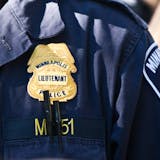Minneapolis police are launching a departmentwide training program designed to show officers how to intervene when one of their own is using excessive force, more than one year after George Floyd was murdered by an officer in the presence of three other cops.
The program, adopted by about 180 police departments across the United States, is called ABLE — short for Active Bystandership for Law Enforcement — and can help transform the culture of a department, advocates say.
"One of the things that active bystandership teaches officers is how to step in and have hard conversations with officers when they are doing the wrong thing," said Prof. Christy Lopez, co-director of the Innovative Policing Program at Georgetown University Law School in Washington, D.C., which sponsors ABLE. "Sometimes that wrong thing is using too much force or arresting someone that shouldn't be arrested."
ABLE officials notified Minneapolis police leaders in late July that the department had been accepted into the program. Some officers who will conduct the training will get trained this month, said attorney Jonathan Aronie, co-founder of ABLE and a partner in the D.C. law firm of Sheppard Mullin.
The training comes at a difficult time for the Minneapolis Police Department, which could be replaced with a new public safety department if voters approve a ballot measure in November. ABLE is being rolled out nearly three months after former officer Derek Chauvin was sentenced to 22½ years for Floyd's murder, and six months before a scheduled second trial for the three officers who were also on the scene. All four officers pleaded not guilty Tuesday to federal charges that they deprived Floyd of his constitutional rights.
Aronie, who also co-chairs ABLE's advisory board, said that no matter the department's future, Minneapolis officers still need to know how to successfully engage in street interventions with their peers.
The three officers charged with complicity in Floyd's death are expected to argue they never were trained in how to stop another officer — especially a senior officer like Chauvin — from using undue force. The program teaches officers how to stop higher-ranking officers who are behaving improperly.
An ABLE memorandum posted last year noted that policies requiring officers to intervene, which were on the books in Minneapolis at the time Floyd was killed, "are not enough to save lives in the real world." Lopez, who led U.S. Justice Department investigations of police departments during the Obama administration, is quoted as saying that police need to be taught how to intervene.



